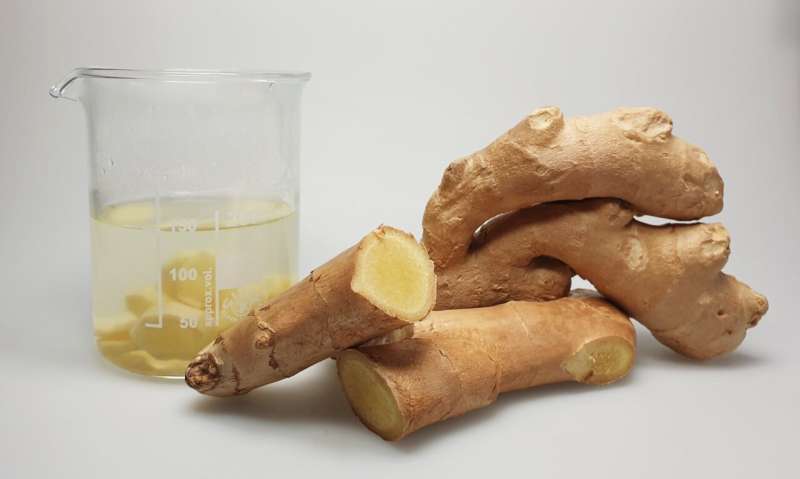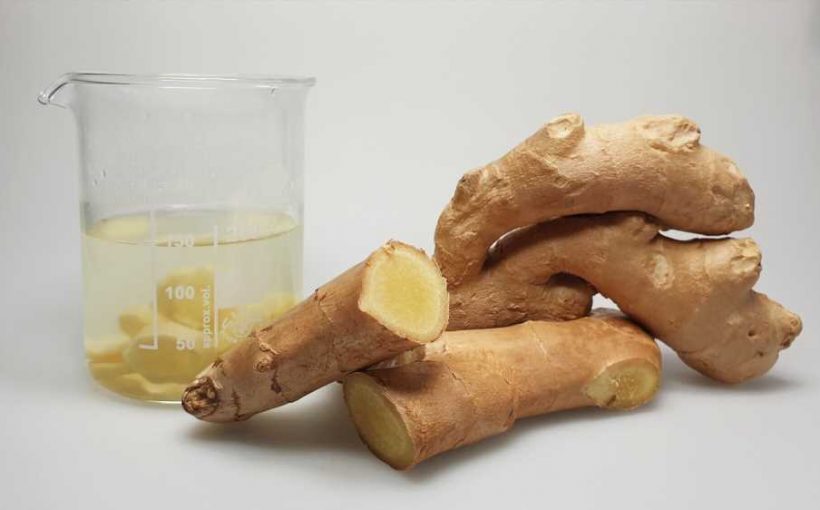
Ginger has a reputation for stimulating the immune system. New results from the Leibniz Institute for Food Systems Biology at the Technical University of Munich (Leibniz-LSB@TUM) now support this thesis. In laboratory tests, small amounts of a pungent ginger constituent put white blood cells on heightened alert. The study also shows that this process involves a type of receptor that plays a role in the perception of painful heat stimuli and the sensation of spiciness in food.
Whether as a medicinal plant or foodstuff, ginger is also becoming increasingly popular in Germany. According to the German Federal Statistical Office, the annual import volume of the fruity-hot root has almost quadrupled over the last ten years to around 31,600 tons. However, even though ginger consumption has increased, the question arises as to whether normal consumption levels are sufficient to achieve health effects. And if so, which compounds and molecular mechanisms play a role in this.
Ginger compound enters the blood
To help clarify these questions, a team led by Veronika Somoza, director of the Leibniz Institute in Freising, Germany, conducted extensive research. The starting point was a result of an earlier pilot study, in which first author Gaby Andersen from the Leibniz-LSB@TUM also played a key role.
As the study shows, significant amounts of pungent ginger compounds enter the blood about 30 to 60 minutes after consuming one liter of ginger tea. By far the highest levels were achieved by [6]-gingerol, with plasma concentrations of approximately 7 to 17 micrograms per liter.
The pungent compound is known to exert its “taste” effect via the so-called TRPV1 receptor, an ion channel located on the surface of nerve cells that responds to painful heat stimuli as well as to pungent compounds from chili and ginger. Since some studies suggest that white blood cells also possess this receptor, the research team tested whether [6]-gingerol influences the activity of these immune cells.
Pungent compound stimulates white blood cells
In a first step, the team succeeded in detecting the receptor on neutrophil granulocytes. These cells make up about two-thirds of white blood cells and serve to combat invading bacteria. Further laboratory experiments by the research group also showed that even a very low concentration of almost 15 micrograms of [6]-gingerol per liter is sufficient to put the cells on heightened alert.
Thus, compared to control cells, the stimulated cells reacted about 30 percent more strongly to a peptide that simulates a bacterial infection. Addition of a TRPV1 receptor-specific inhibitor reversed the effect induced by [6]-gingerol.
“Thus, at least in experiments, very low [6]-gingerol concentrations are sufficient to affect the activity of immune cells via the TRPV1 receptor. In blood, these concentrations could theoretically be achieved by consuming about one liter of ginger tea,” says Gaby Andersen.
“So, our results support the assumption that the intake of common amounts of ginger may be sufficient to modulate cellular responses of the immune system. Nevertheless, there are still many unanswered questions at the molecular, epidemiological and medical levels that need to be addressed with the help of modern food and health research,” concludes Veronika Somoza.
The work is published in the journal Molecular Nutrition & Food Research.
More information:
Gaby Andersen et al, [6]‐Gingerol Facilitates CXCL8 Secretion and ROS Production in Primary Human Neutrophils by Targeting the TRPV1 Channel, Molecular Nutrition & Food Research (2022). DOI: 10.1002/mnfr.202200434
Journal information:
Molecular Nutrition & Food Research
Source: Read Full Article
